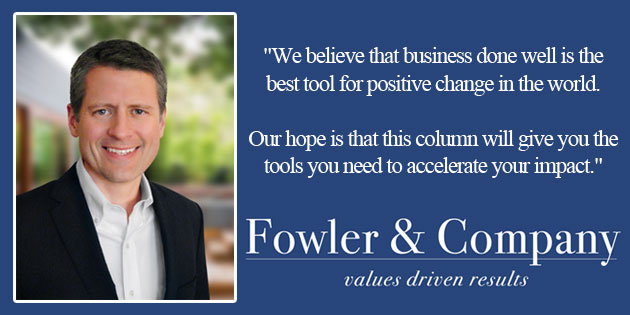
Curt Fowler | Fowler & Company
Last week we introduced the concept of conscious capitalism and how conscious businesses like L.L. Bean, Costco, Starbucks and Southwest Airlines outperform the S&P 500 by over 10x.
This week I want to give you the 4 pillars that these businesses are built on so you can start building a conscious business.
Higher Purpose
Businesses exist to meet a human need. The better we meet that need the more profit we make. Profit is not the purpose. The value our organizations deliver is the purpose. We all want to contribute to making the world a better place. Conscious companies put contribution front and center. They realize that profit is a requirement to existence, not the reason they exist. This attracts great people and creates a great culture. Great people want to make a positive change in the world, they want to live out their purpose. Give them that opportunity in your business and you will attract and retain the talent you need to grow.
Stakeholder World View
John Muir observed that “when you tug at a single thing in nature, you find it attached to the rest of the world.” Conscious leaders understand that this also holds true for businesses. Without a healthy business “eco-system” the business will fail to thrive. Toyota realized this and began partnering with its suppliers so that both parties win by working together.
Each business has its own unique ecosystem, but most include shareholders, employees, customers, suppliers and the communities you work in. The great thing is it has been proven that companies can outperform the market by serving all stakeholders well. Nobody must lose.
Conscious Leadership
Robert Greenleaf, the author of Servant Leadership, observed that “Good leaders must first become good servants.” Conscious leaders focus on the success of all stakeholders, especially the people they work with daily. They understand that their role is to serve the purpose of the organization and to help those they lead accomplish great things in the organization and in their personal lives. They are humble leaders, willing to learn and able to engage the hearts, minds and hands of their people.
Conscious Culture
Management guru Peter Drucker often stated that “Culture eats strategy for lunch.” He was right. The greatest strategies go unexecuted because they were not supported by the culture of the organization.
An organization’s culture creates the clarity needed to engage and empower its people. A culture is built on the core values, purpose and vision for the business. Once your people understand those 3 pillars and their role in achieving the vision the leader’s role is to simply give them the resources they need to succeed. Next week we’ll dig deeper into how conscious companies outperform their competition by such a wide margin.
Curt Fowler is an organizational growth expert and President of Fowler & Company, a business advisory firm dedicated to helping leaders create and achieve a compelling vision for their organization. He has an MBA in Strategy and Entrepreneurship from the Kellogg School, is a CPA, and a pretty good guy as defined by his wife and four children.









